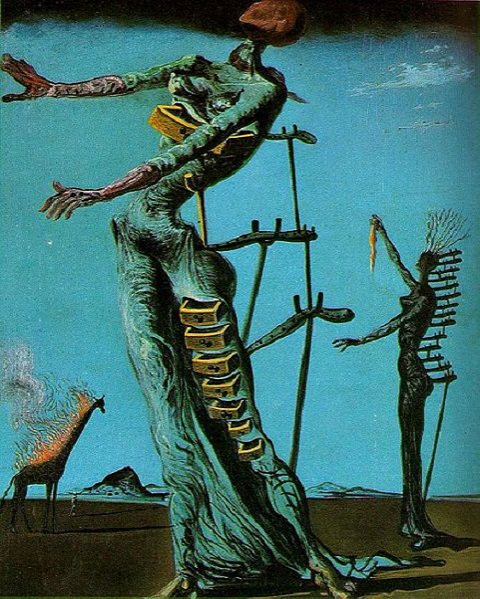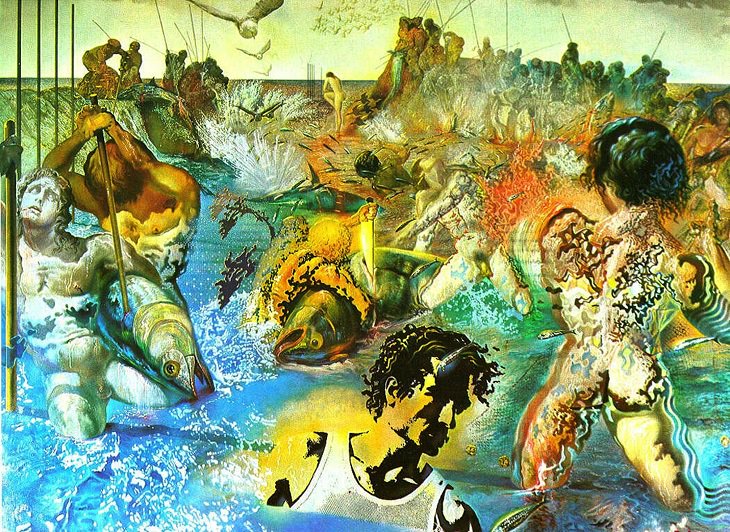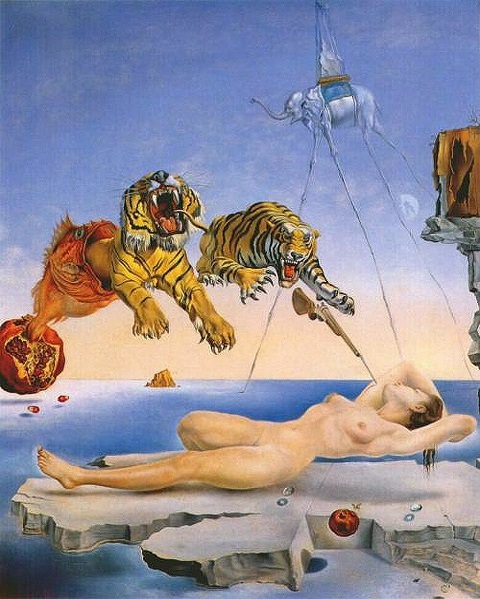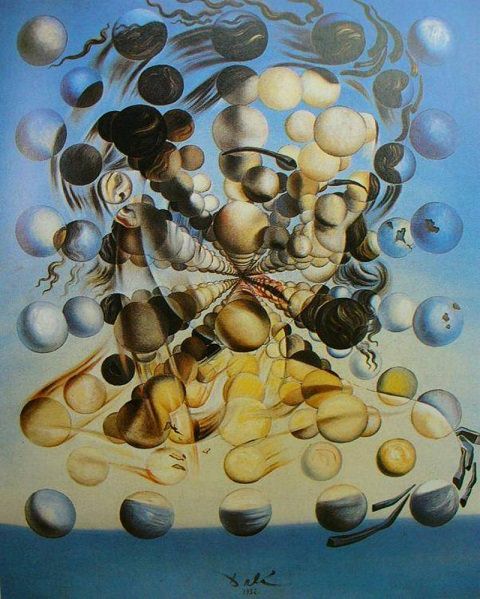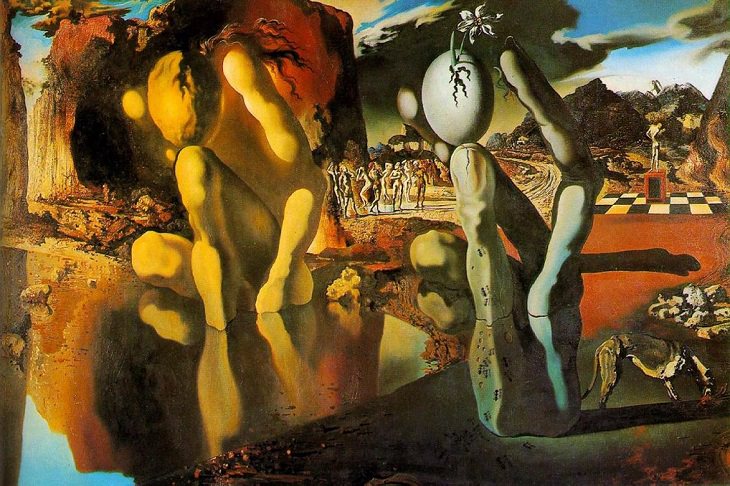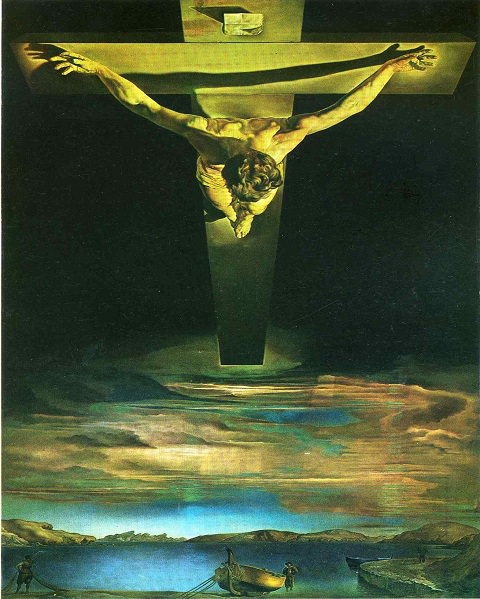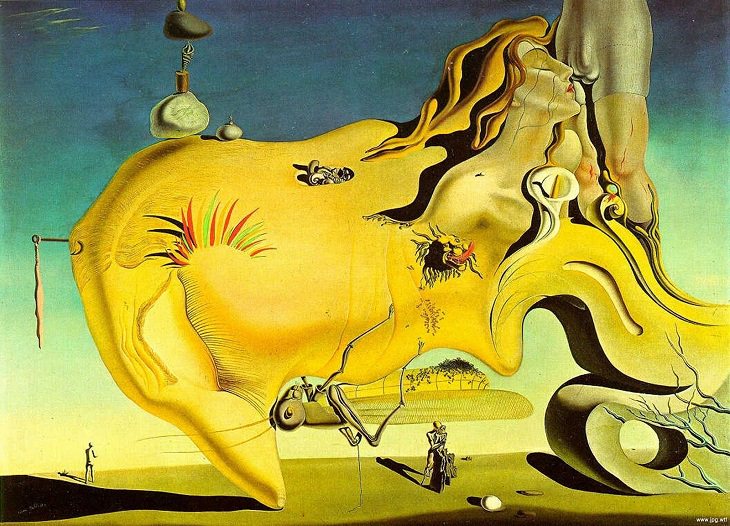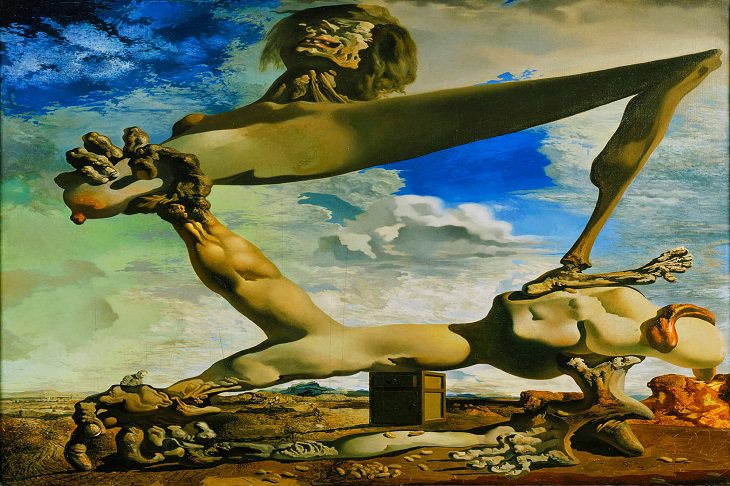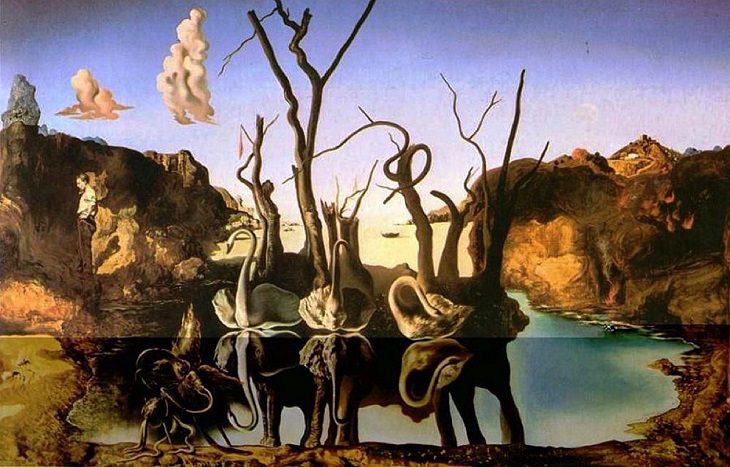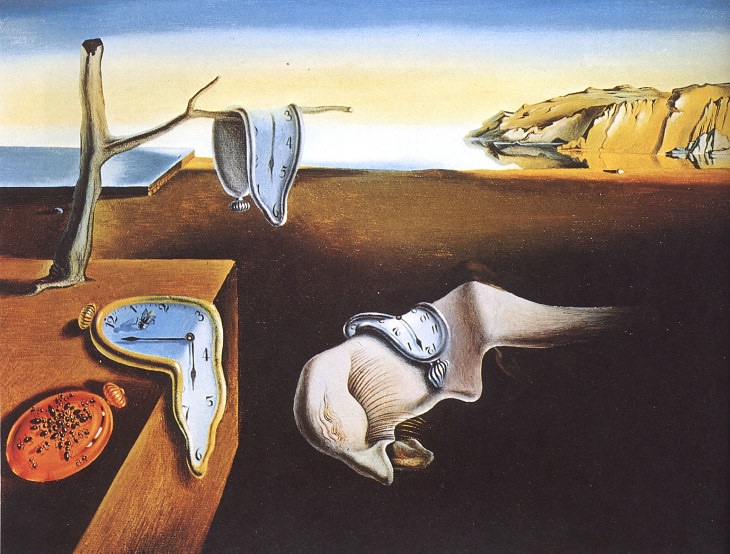10. The Burning Giraffe - Year: 1937
This painting is seen as the expression of Dali's personal struggle with the civil war that was going on in Spain. The painting shows two feminine figures with phallic shapes protruding from the backs. The hands, forearms, and face of the first figure have been stripped down to the muscular tissue. Furthermore, there are opened drawers protruding from the leg and chest of the figure.
Dali was an admirer of Sigmund Freud and a number of his paintings were influenced by the famous neurologist. The aforementioned open drawers can be traced back to Freud's psychoanalytical method and refer to the inner subconsciousness within man. The burning giraffe that can be seen in the background was described by Dali himself as "the masculine cosmic apocalyptic monster." Dali believed the giraffe to be a premonition of war.
9. Tuna Fishing (Homage to Meissonier) - Year: 1966-67
This painting is considered to be one of Dali's last great masterpieces. It took him two summers to create this art in which, apart from surrealism, he has used other styles such as Pop Art, Action painting, Pointillism, psychedelic art, and geometrical abstraction. Tuna Fishing depicts a violent struggle between men and large fish - a personification of the limited universe.
Dali dedicated this painting to Jean Louis Ernest Meissonier, a 19th century French artist who was known for his depictions of battle scenes. The work exemplifies the mastery that Dali acquired over his career.
8. Dream Caused by the Flight of a Bee Around a Pomegranate a Second Before Awakening - Year: 1944
According to Dali, this painting was meant "to express for the first time in images Freud's discovery of the typical dream with a lengthy narrative, the consequence of the instantaneous of a chance event which causes the sleeper to wake up." This painting depicts the sleeping naked figure of Dali's wife Gala, floating above a slab of rock. Beside her, two drops of water, a pomegranate, and a bee are also airborne.
Gala's dream is prompted by the bee's buzzing and is portrayed in the upper part of the work. In a succession of images, a pomegranate opens to release a giant redfish from which two ferocious tigers emerge together with a bayonet that will soon wake Gala from her peaceful sleep.
7. Galatea of the Spheres - Year: 1952
After the atomic bombings of Nagasaki and Hiroshima, Dali became enthralled with nuclear physics and the theories of disintegration of the atom. Furthermore, it was also the period where he had renewed his interest in Catholicism. This led to Dali's Nuclear Mysticism period, in which his art used ideas from modern science as a means of rationalizing the Christian religion. Realizing that all matter is made up of atoms, Dali made sure that his works appear to disintegrate into multiple atoms.
This painting depicts his wife and muse, Gala. Her face is made up of densely populated spheres, representing atomic particles, which give a marvelous 3D effect to the canvas. Galatea in the title is the name of a sea-nymph in Classical Mythology, who was known for her virtue.
6. Metamorphosis of Narcissus - Year: 1937
The paranoiac-critical method is a Surrealism technique that was developed by Dali in the early 1930s. The artist uses this technique to tap into his subconsciousness through systematic irrational thought and a self-induced paranoid state. Dali used this technique in a number of his paintings, especially those that involved optical illusions and multiple images.
According to the Greek myth, Narcissus, who was well-known for his beauty, fell in love with his own reflection in water. Dali's own interpretation of this myth, shows Narcissus sitting in a pool, looking down.
5. Christ of Saint John of the Cross - Year: 1951
This painting gets its name from the fact that it is designed based on a drawing by the 16th-century Spanish friar John of the Cross. This artwork consists of a triangle, which is formed by the arms of Christ and the horizontal of the cross; and a circle, which is formed by the head of Christ. The triangle could be seen as a reference to the Holy Trinity, while the circle might represent unity.
Although this is a representation of the crucifixion, there are no nails or blood. According to Dali himself, the inspiration for this painting came to him in a dream, in which he was convinced that depicting nails and blood would mar his portrayal of Christ. This is considered to be one of the best religious paintings of the 20th century.
4. The Great Masturbator - Year: 1929
Dali first met his wife Gala in 1929. This painting was created in the same year and is thought to be a reflection of the erotic transformation that Dali underwent when he met her. The main yellow area represents the artist himself sleeping. Out of his head comes the vision, probably representing an erotic fantasy, of a nude female, resembling his beloved wife, drawn to male genitalia, presumably Dali's.
The Great Masturbator is well-known for glorifying something that is usually ridiculed and is among Dali's most controversial works.
3. Soft Construction with Boiled Beans (Premonition of Civil War) - Year: 1936
This masterpiece was painted 6 months before the Spanish Civil War began. He claimed that he knew the war was coming due to "the prophetic power of his subconscious mind". The painting depicts his anxiety during the time and predicts the horror and violence to come. It portrays two bodies, one darker than the other, in a fight that neither looks like winning.
This monstrous creature is self-destructive, just like war. Dali made sure that the painting was realistic despite the fantastical creatures it depicts. The boiled beans are maybe a reference to the simple stew that the poor citizens of Spain had to eat during these times. This piece of art is considered to be one of Dali's greatest masterpieces and it is renowned for the brilliant use of surrealism to depict the horrors of war.
2. Swans Reflecting Elephants - Year: 1937
Double images were an important part of Dali's paranoiac-critical method. Like in Metamorphosis of Narcissus, this painting uses reflection to create a double image. The three swans have been positioned so that their necks become the elephants' trunks and the trees become the legs of the elephants. This painting is now considered a landmark in Surrealism as it enhanced the popularity of the double-image style. It is the most famous double-image painting by Dali and is one of the most well-known works in Surrealism.
1. The Persistence of Memory - Year: 1931
This is an iconic and often-reproduced painting that depicts a scene with watches melting on rocks and the branch of a tree, with the ocean in the background. Dali makes use of the concept of hard and soft in this masterpiece. In this painting, the melting watches and rocks represent the soft and hard aspects of the world. The Persistence of Memory has been analyzed a lot over the years, as Dali never explained his work.
The melting watches have also been thought to be a representation of the relativity of time and space; as a symbol of mortality, with the ants surrounding the watches representing decay. This painting is considered to be one of the greatest painting of the 20th century.

